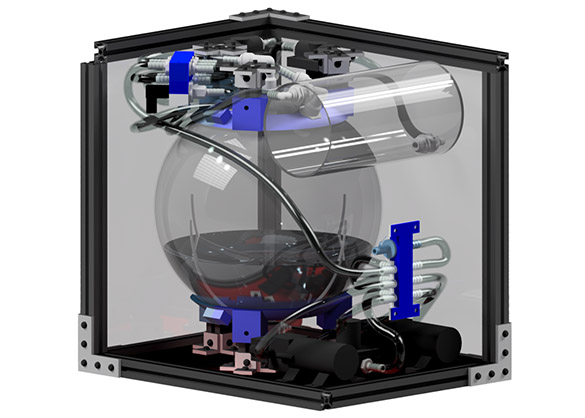Propellant Mass Gauging in Gateway Architecture Vehicles
PI: Kevin Crosby, Carthage College, Rudy Werlink (Co-I), NASA/Kennedy Space Center
PI: Kevin Crosby, Carthage College, Rudy Werlink (Co-I), NASA/Kennedy Space Center

- TA02 In-Space Propulsion Technologies
NASA’s Space Launch System (SLS) rocket and Orion spacecraft as well as commercial partners have a need for a low-gravity propellant mass gauging concept that provides robust mass measurements during dynamic events that involve changes in tank pressure, such as engine burns. The researchers will use parabolic flights to validate MPG/PSM during continuous drain operations in microgravity, which is expected to provide initial data on the method’s sensitivity bounds during high-rate drain. A vertical-takeoff and vertical-landing suborbital flight will seek to validate the SDM for 0-g settled gauging, with a goal of demonstrating independence from tank pressure, which affects thin-wall vessels.
The MPG technology is currently at TRL 5, while the SDM and PSM have been validated in 1-g laboratory testing on flight hardware for both Earth-storable and cryogenic propellants. The successful completion of the test program will establish a new low-gravity capability of modal propellant gauging: the ability to meet NASA goals of in-space propellant mass gauging during propellant transfer, engine burns, and other dynamic mission phases in which tank pressure may be changing.
NASA missions, notably Gateway, Orion and the SLS rocket
Human space exploration missions
Commercial and military satellite providers
Launch services providers
Developers of on-orbit fuel depots
Technology Details
-
Selection DateTechFlights19 (Oct 2019)
-
Program StatusActive
- 0 Parabolic
- 0 sRLV
Development Team
-
PIKevin Crosby
-
PI Organization
-
Co-IRudy Werlink
-
Co-I Organization
-
SponsorNASA
-
PartnersNASA JSC

